
Your PV system was installed two years ago and everything has been perfect. You’ve been reaping the rewards of solar power for some time now and you’ve adjusted to the significantly lower electric bills. During some months, you don’t even have an electric bill. You’re lucky also, because you live in a state where you receive quarterly solar renewable energy certificate income based on the performance of your PV system. You’re so impressed with the system at times you like to share monitoring screen shots with friends and colleagues.
One day at lunch a colleague tells you he is interested in installing solar on his home. You’re so supportive of solar that you start to sell your colleague on the idea; so much so that the installation company that proposed your colleague’s system should pay you commission for your involvement. To close the deal, you bring up your PV system’s remote monitoring system on your phone to show your colleague. A graph of today’s production pops up on the screen. Something is wrong though. The graph is blank. You log out and log back into the monitoring system, but the graph is still blank. You tell your colleague that there must be something wrong with the monitoring system today, but continue to show him the past couple of day’s worth of production. Your colleague is impressed, so much so that the he is just about to sign on the dotted line for a system of his own.
On your way back to the office you check the monitoring system again. Again, there is no production showing. You set a reminder for yourself to investigate when you get home.
As you pull up to your home, your phone beeps, notifying you to, “investigate pv system.” You go down to the basement where the inverter is located and look for any signs of trouble. You check the breaker panel and everything appears to be ok. You check the inverter and it is off. “What’s going on,” you say to yourself. You notice a blinking LED that doesn’t seem correct. It’s the GFDI indicator. Uh, oh that can’t be good. You recognize that further troubleshooting is beyond your skills and call up the installer.
Your installer shows up the next day, bright and early in the morning. He spends some time in the basement with a multimeter and after a half an hour or so, he says he needs to check out the rooftop array. You are curious to find out what is wrong so you follow the installer outside and foot the ladder. As your installer approaches the gutter line, he stops to take a peek underneath the array. He softly let’s out an, “Oh, that doesn’t look good.” What is it you’re thinking, what is it? Your installer takes out his phone and starts taking photos underneath the array. After snapping a handful of photos your installer makes his way down the ladder. When he reaches the bottom, he says that he’ll have to bring a couple of guys over to remove a module or two, maybe a couple more. That’s bad news, but it doesn’t sound like it will be too much of an issue. He then shows you a couple of photos pointing out nests. “Those are squirrel nests,” he says, “and there’s likely a ground fault in one of them.”
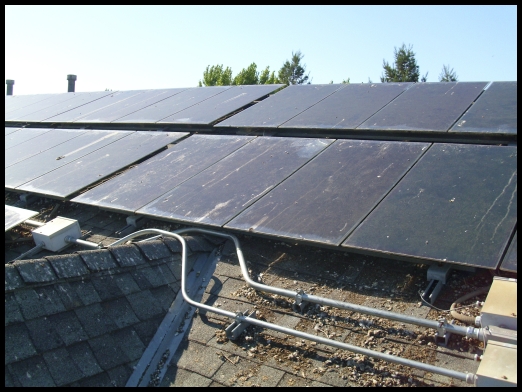
Fast forward to the crew showing up. They pull a couple of modules, a couple of more and then another couple. After removing modules, they gather clumps of nest material and dump them in large, heavy black trash bags. The crew works the remainder of the day as well as half of the next day. When done, the PV system is up and running, but there is one minor change to the rooftop array. The solar company installed a mesh screen around the perimeter of the array to keep those pesky squirrels from making a home and chewing the precious PV wire.
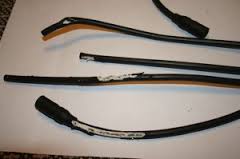
In all, the last-minute repair could cost a couple thousand dollars and a ton of frustration. This can all be avoided though. First, good wire management will help mitigate the potential for squirrels chewing on wires. If the wiring is kept snug against the racking system and module frames, it is unlikely that there will be sagging wires that the squirrels will target. However, it may be impossible to keep all wiring tight to rigid components. Wire whips exiting module junction boxes can sometimes be difficult to manage. Therefore, additional steps may be required. These include installing perimeter screens, cable trays or other custom cable protection that provide an extra layer of insurance against those little furry destructive rodents. These extra steps should certainly be implemented when a site is known to have large squirrel populations or a rogue squirrel or two.
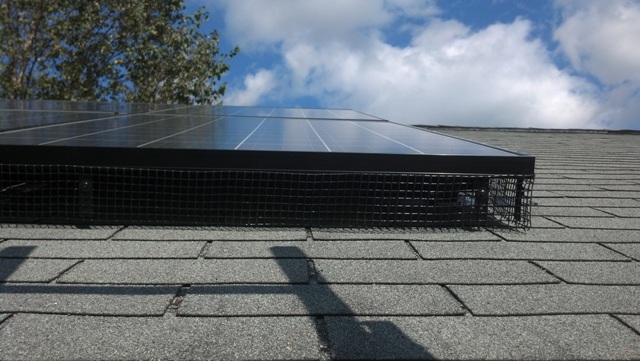

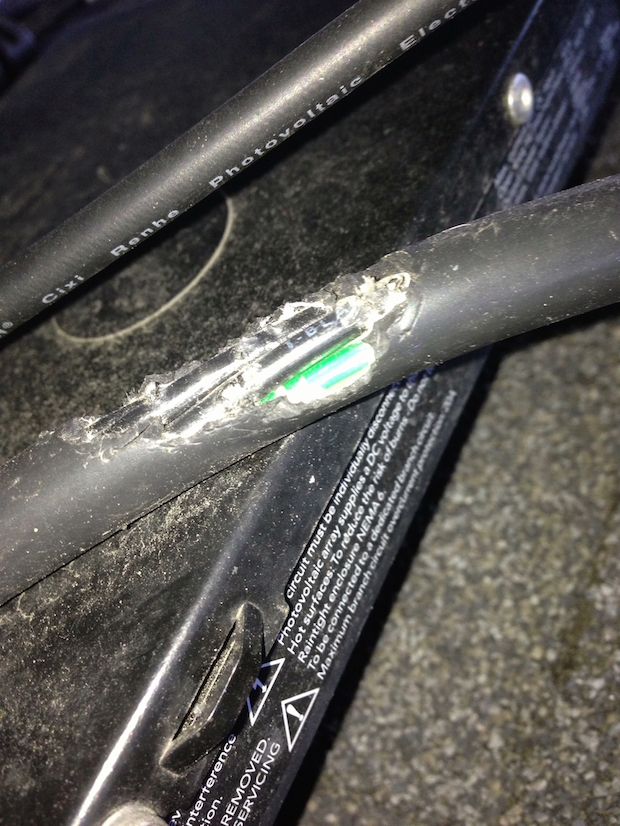
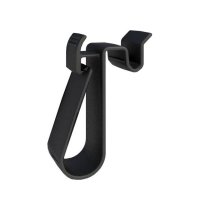
Comments
Great article! In addition to rodents chewing on wires and causing serious damage, Bird-X has received many calls from solar panel installers and maintenance companies requesting Bird-X Solar Mesh for bird exclusion - especially pigeons! Birds love nesting under solar panels because this provides them shade as well as protection, which can cause a serious mess that can damage panels over time.
Bird-X Solar Mesh is a great product to help prevent these problems. Unlike most solar mesh or critter guard, Bird-X solar mesh is a PVC coated stainless steel rather than galvanized steel, so it lasts longer in extreme weather. Furthermore the custom UV-Treated nylon clip locks into place, unlike stainless steel clips that can loosen over time.
If you are interested in learning more about Bird-X Solar Mesh, please give us a call at 312.226.8781